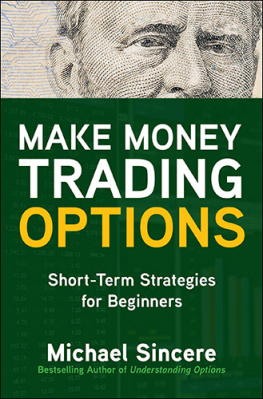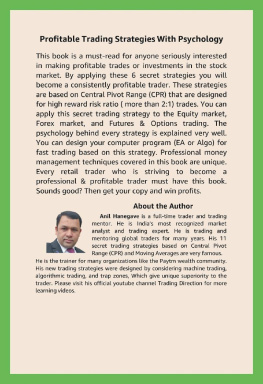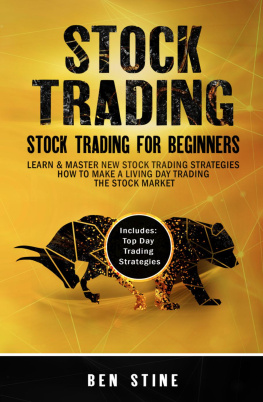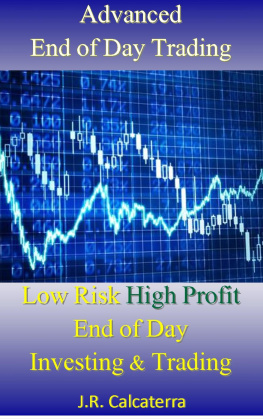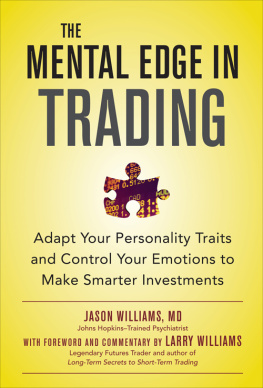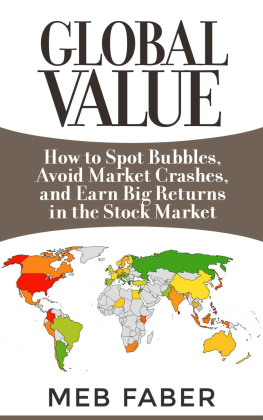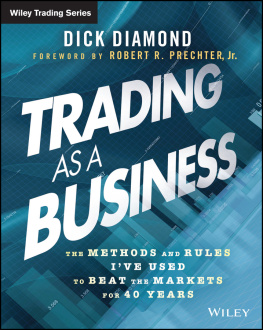Carl Futia - The Art of Contrarian Trading: How to Profit From Crowd Behavior in the Financial Markets
Here you can read online Carl Futia - The Art of Contrarian Trading: How to Profit From Crowd Behavior in the Financial Markets full text of the book (entire story) in english for free. Download pdf and epub, get meaning, cover and reviews about this ebook. City: Hoboken, N.J, year: 2013, publisher: John Wiley and Sons, genre: Business. Description of the work, (preface) as well as reviews are available. Best literature library LitArk.com created for fans of good reading and offers a wide selection of genres:
Romance novel
Science fiction
Adventure
Detective
Science
History
Home and family
Prose
Art
Politics
Computer
Non-fiction
Religion
Business
Children
Humor
Choose a favorite category and find really read worthwhile books. Enjoy immersion in the world of imagination, feel the emotions of the characters or learn something new for yourself, make an fascinating discovery.
- Book:The Art of Contrarian Trading: How to Profit From Crowd Behavior in the Financial Markets
- Author:
- Publisher:John Wiley and Sons
- Genre:
- Year:2013
- City:Hoboken, N.J
- Rating:4 / 5
- Favourites:Add to favourites
- Your mark:
The Art of Contrarian Trading: How to Profit From Crowd Behavior in the Financial Markets: summary, description and annotation
We offer to read an annotation, description, summary or preface (depends on what the author of the book "The Art of Contrarian Trading: How to Profit From Crowd Behavior in the Financial Markets" wrote himself). If you haven't found the necessary information about the book — write in the comments, we will try to find it.
Abstract: Why is it so hard to beat the market How can you avoid getting caught in bubbles and crashes You will find the answers in Carl Futias new book, The Art of Contrarian Trading. This book will teach you Futias novel method of contrarian trading from the ground up. In 16 chapters filled with facts and many historical examples Futia explains the principles and practice of contrarian trading. Discover the Edge which separates winning speculators from the losers. Find out how to apply the No Free Lunch principle to identify profitable trading methods. Learn about the wisdom and the follies of investment crowds and how crowds are formed by information cascades that drive stock prices too high or too low relative to fair value. Discover the power of your Media Diary - and how to use it to spot these information cascades, measure the strength of the crowds beliefs, and decide when the crowds view is about to be proven wrong. You will watch Futia apply these principles of contrarian trading to navigate safely and profitably through the last 26 tumultuous years of roller coaster swings in the U.S. stock market a time during which Futia kept his own media diary and developed his Grand Strategy of Contrarian Trading. See how this Grand Strategy worked during the Great Bull Market of 1982-2000. Watch the Contrarian Rebalancing technique in practice during the dot.com crash of 2000-2002. Find out when the Aggressive Contrarian Trader bought and sold during the bull market of 2002-2007. Read about the causes of the Panic of 2008 and ups and downs of contrarian trading during that dangerous time. Futia shows you how the market turning points during the 1982-2008 period were foreshadowed by magazine covers and newspaper headlines that astonishingly and consistently encouraged investors to do the wrong thing at the wrong time. By monitoring crowd beliefs revealed by news media headlines and with the guidance provided by the many historical examples Futia provides a trader or investor will be well-equipped to anticipate and profit from market turning points
Carl Futia: author's other books
Who wrote The Art of Contrarian Trading: How to Profit From Crowd Behavior in the Financial Markets? Find out the surname, the name of the author of the book and a list of all author's works by series.



